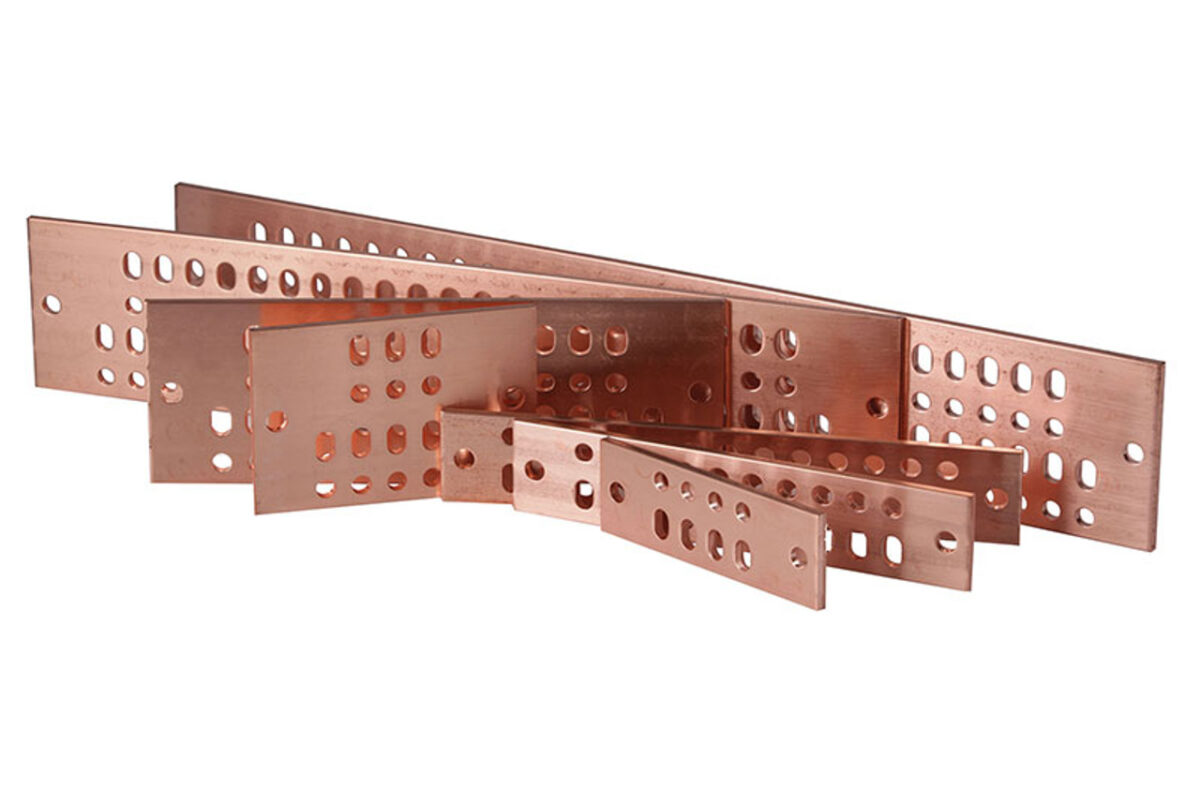Copper Bus Bars serve as pivotal components in electrical systems, renowned for their exceptional electrical conductivity, thermal performance, and durability. Widely utilized in power distribution, grounding systems, and industrial applications, copper bus bars exhibit superior electrical characteristics crucial for efficient current transmission.
Technical Specifications:
Material Composition:
- Copper Alloys: Common alloys include C11000 (Electrolytic Tough Pitch or ETP) and C10100 (Oxygen-Free High Conductivity or OFHC) copper due to their high conductivity and purity.
- Conductivity: Copper boasts an unparalleled electrical conductivity of approximately 100% IACS (International Annealed Copper Standard), providing optimal current-carrying capacity.
Mechanical Properties:
- Tensile Strength: Ranges from 25,000 psi (172 MPa) to 35,000 psi (241 MPa) depending on the copper alloy and temper.
- Elongation: Varies from 30% to 40% based on alloy composition and temper.
Thermal Conductivity:
- Copper exhibits exceptional thermal conductivity, approximately 390 W/m·K, ensuring efficient heat dissipation and current transmission.
Corrosion Resistance:
- Copper bus bars possess inherent corrosion resistance, forming a protective oxide layer that enhances their durability in various environments.
Electrical Properties and Performance:
Ampacity and Current-Carrying Capacity:
- Copper Bus Bars offer high ampacity and current-carrying capacity, typically ranging from 1200 to 1600 A/mm² at an ambient temperature of 65°C to 75°C.
- Ampacity is dependent on factors such as cross-sectional area, temperature, and ventilation.
Voltage Drop:
- Copper bus bars exhibit low electrical resistance, resulting in minimal voltage drop even at high currents, contributing to efficient power transmission.
Manufacturing and Applications:
Manufacturing Processes:
- Copper bus bars are fabricated through processes such as extrusion, casting, or machining to achieve diverse shapes and sizes required for specific applications.
- Precision CNC and Swiss Lathe Machining techniques are employed for intricate designs and connections.
Applications:
- Power Distribution: Utilized extensively in switchgear, distribution boards, and substations for efficient power distribution and transmission.
- Grounding Systems: Crucial for grounding applications due to their unparalleled conductivity and corrosion resistance.
- Industrial Machinery: Employed in motors, transformers, and heavy equipment where high electrical conductivity is crucial.
Advantages and Considerations:
Advantages of Copper Bus Bars:
- High Conductivity: Copper’s superior conductivity ensures optimal current transmission and low resistive losses.
- Durability: Copper bus bars offer exceptional durability, especially in harsh environments, due to their corrosion resistance.
Considerations:
- Cost: Copper’s high material cost compared to alternatives like aluminum might impact overall system costs.
- Weight: Copper’s higher density results in heavier bus bars compared to aluminum, impacting weight-sensitive applications.
Copper Bus Bars stand as an integral component in electrical systems, providing unmatched electrical performance, durability, and efficiency. Their meticulous design, manufacturing precision, and versatility underscore their indispensability in diverse electrical applications.

